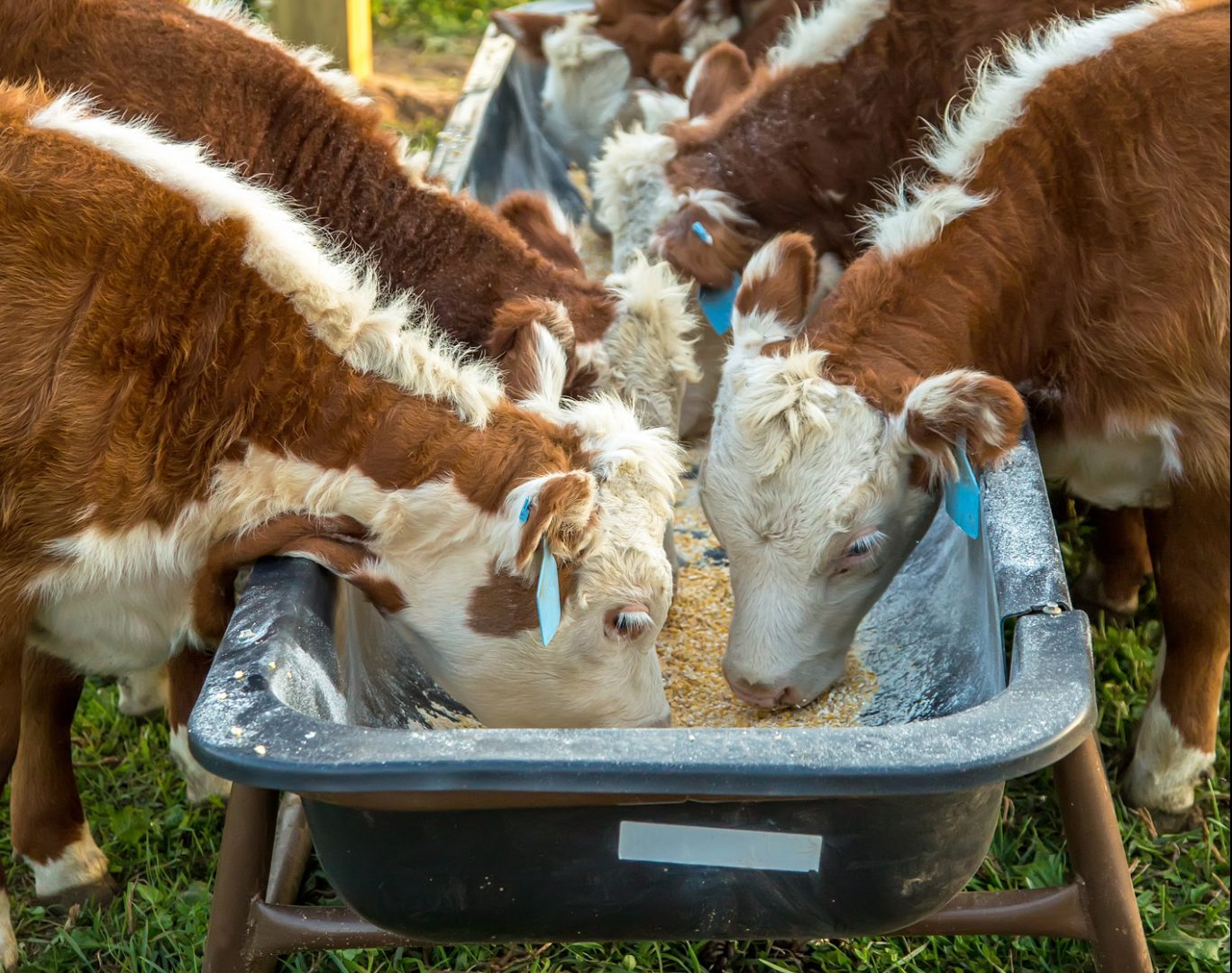Beef

Know the best practices to protect feed from the effects of harmful residues for the health and safety of your cattle and ultimately the consumers of your beef.
Providing a nutritional program that meets animal needs is critical to producer and animal success, whether it is through forage, forage and supplemental feed, or a complete feed. However, meeting the nutritional needs of cattle, especially non-fed cattle, does not guarantee beef quality. A nutritional program that meets animal needs and avoids toxins and residues as a result of the feeding strategy will help ensure the safety and quality of the beef produced.
Proper Storage of Feed
Proper storage is important in maintaining feed quality after harvest or purchase. Grains and pelleted feedstuffs should be stored in a building or containers that will not allow moisture, birds, rodents, or other contaminants to gain entry. Birds and rodents not only consume feed but also can contaminate it and potentially spread disease through their droppings.
Consideration should be given to the type of container in which feed ingredients are stored. Never use a container that was originally used to carry any type of pesticide or other chemical not labeled for livestock feed. The residues from these containers could easily contaminate feed sources, which in turn potentially create health issues for animals as well as possible meat safety issues. The same is true for using an old oil or solvent barrel.
Grains or pelleted feedstuffs stored in an environment with high moisture content, or forage harvested when too wet, can quickly develop mold. Molds lower feed quality and can make animals that consume it extremely sick. Aflatoxicosis (aflatoxin poisoning) is a relatively common type of mold-induced poisoning typically found in warm weather. Aflatoxin can cause poor performance and abortions in pregnant animals as well as sudden death in all animals. Consult your local Extension office or veterinarian regarding molds on feed; also ask for guidance on laboratories that can test feed samples for the presence of things like aflatoxins.
Pesticide Contamination in Feed
Several types of pesticides (insecticides and herbicides) used in crop production can cause residue problems in livestock when not used correctly. Do not store any type of pesticide near feed supplies. A leak or spill could provide an avenue for residue contamination of the meat. Use only those pesticides labeled for use on pastures to be grazed or harvested for animal feed. Follow the label instructions and record pesticide use. If feed is purchased from others, ask if pesticides were used and at what time in the growing or harvesting season they were applied. Make sure all feeds are high quality and residue-free.
Medication Residue in Feed
Several feed additives and medicated feeds can be used in producing market animals. Medicated feeds must be used carefully and only according to FDA-approved label directions. Withdrawal times are designated on all medicated feeds and must be followed to avoid drug residues in beef. With all animals, but especially cull breeding stock, these withdrawal times should be followed before the sale of animals, or the buyer should be notified of drug withdrawal times.
Whenever feed additives and medications are used, record the date, compound, and feeding level. Ionophores and insect growth regulators for fly control can still be purchased over-the-counter, but most antibiotics used as feed additives require a veterinary feed directive before they can be included in feed. Consult your veterinarian for recommendations on the appropriate use of these ingredients and to obtain any necessary veterinary feed directives for antibiotics administered through feed or minerals.
Steps to Ensure Safe Feed
When feeding animals, you must implement beef quality assurance (BQA) best practices to ensure that zero contamination occurs to the feed or feed ingredients. The ultimate goal of feeding cattle is the production of safe and wholesome food for human consumption. Contaminated feed can result in beef that is deemed inedible due to harmful residues. Following is a summary of steps to ensure feed safety:
- Check feedstuffs for color, temperature, odor, moisture, molds, and other foreign matter.
- Maintain quality by proper storage techniques to keep moisture, rodents, and birds away from the feed supply.
- Be especially careful to use clean, residue-free containers to store feed.
- Apply all pesticides carefully and judiciously to any feed produced to avoid possible pesticide contamination.
- Most medicated feeds have withdrawal times that must be followed before slaughter of the animal is allowed. Use medicated feeds with care and always follow FDA-approved label directions, including slaughter withdrawal times.
- Always consult a qualified nutritionist or veterinarian if you have questions about the use of various feed ingredients or compounds.
Download a PDF of Alabama Beef Quality Assurance: Avoiding Residues from Feed, ANR-1284.


